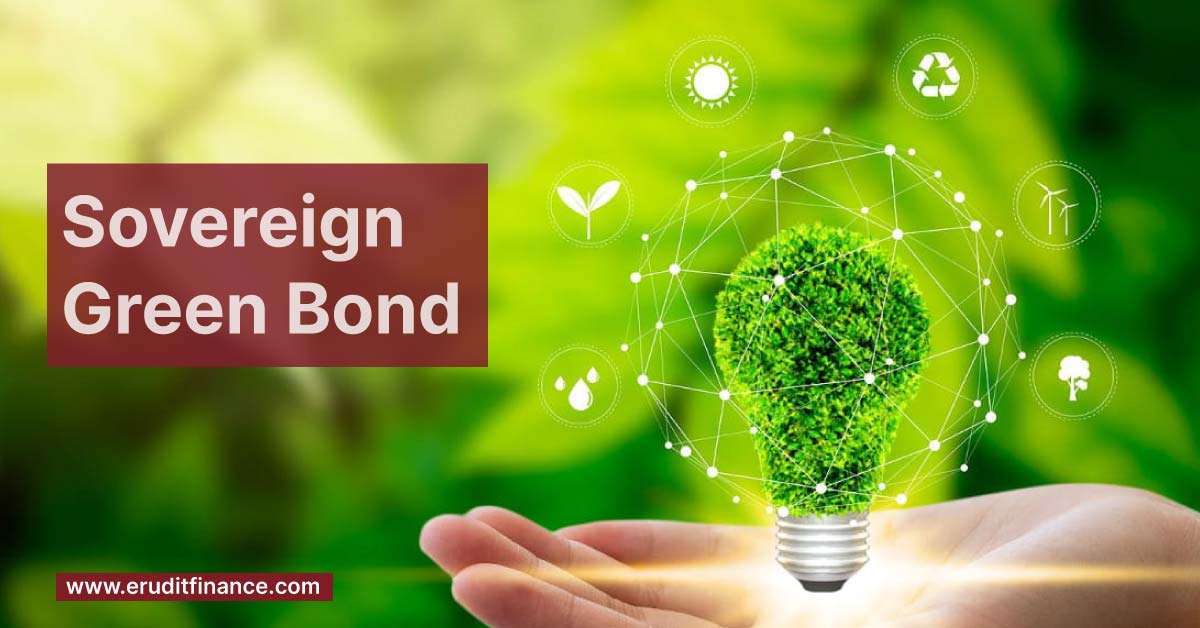Embark on a sustainable financial journey with Sovereign Green Bonds, a powerful initiative aimed at funding eco-friendly projects. As a responsible investor, you contribute to the global shift towards a greener future, supporting environmentally conscious endeavors. These bonds, issued by governments, prioritize projects that combat climate change, promote renewable energy, and enhance ecological sustainability. Invest in Sovereign Green Bonds today to align your financial goals with a commitment to a healthier planet and a more sustainable tomorrow.
Sovereign Green Bond
Sovereign Green Bonds represent a pivotal intersection of finance and environmental stewardship. Issued by governments, these bonds aim to raise capital exclusively for eco-friendly projects and sustainable initiatives. Investors in Sovereign Green Bonds play a vital role in fostering positive environmental change, supporting endeavors such as renewable energy projects, afforestation initiatives, and climate-resilient infrastructure.
The funds generated contribute to a greener and more sustainable future, aligning with global efforts to combat climate change. Investors not only gain potential financial returns but also actively participate in driving positive environmental impact. Sovereign Green Bonds exemplify a commitment to responsible investing, where financial decisions catalyze positive change, contributing to a more resilient and sustainable world for future generations.
Who Benefits From Green Bonds?
Green bonds yield a range of benefits for various stakeholders, fostering a positive impact on both the environment and the economy.
| Investors |
|
| Issuers |
|
| Communities |
|
| Society at Large |
|
In essence, green bonds catalyze sustainable development, promoting financial and environmental well-being for a broad spectrum of stakeholders.
Are Green Bonds Tax Free?
Green bonds themselves are not inherently tax-free. The tax treatment of green bonds depends on the jurisdiction and the specific tax regulations in place. In many cases, the interest income earned from green bonds is subject to the same tax rules as traditional bonds.
However, some governments may offer incentives or tax benefits to encourage investment in environmentally friendly projects, which are typically funded through green bonds. Investors should carefully review the tax implications and incentives provided by their local tax authorities to determine the specific tax treatment of green bonds in their region.
What Is the Interest Rate of Green Bonds?
The interest rate, or yield, of green bonds is not fixed universally and can vary based on several factors
- Issuer- The entity issuing the green bonds (government, corporation, or financial institution) determines the interest rate. Different issuers may offer varying rates based on their creditworthiness and financial standing.
- Market Conditions- Like traditional bonds, green bond yields are influenced by broader market conditions, including interest rate trends. Changes in economic conditions can impact the overall interest rate environment.
- Bond Characteristics- The specific terms and features of the green bonds, such as the maturity date and coupon structure, play a role in determining the interest rate. Longer-term bonds or those with higher coupon rates may offer higher yields.
- Credit Rating- The credit rating of the issuer can affect the interest rate. Higher-rated issuers typically offer lower interest rates because they are considered less risky investments.
- Purpose of Funds- In some cases, the intended use of the funds raised through green bonds, such as supporting environmentally sustainable projects, may influence investor demand and, subsequently, the interest rate.
Who Issues Green Bonds?
Green bonds are issued by a variety of entities, including governments, municipalities, corporations, and financial institutions. The issuers play a crucial role in determining the specific projects and initiatives that the funds raised through green bonds will support. Here are the main types of entities that commonly issue green bonds:
- Governments and Municipalities- National governments and local municipalities issue green bonds to fund environmentally sustainable projects and initiatives. These may include investments in renewable energy, energy efficiency, public transportation, and climate resilience.
- Corporations- Private companies issue green bonds to finance projects aligned with sustainability goals. These projects often focus on reducing the company’s environmental impact, such as implementing renewable energy solutions, improving energy efficiency, or enhancing sustainable supply chain practices.
- Financial Institutions- Banks and other financial institutions issue green bonds to raise capital for lending to green projects. They act as intermediaries, channeling funds from investors to sustainable initiatives in sectors like renewable energy, green infrastructure, and environmentally friendly technologies.
- International Organizations- Multilateral development banks and international organizations may issue green bonds to support global sustainable development goals. These bonds contribute to financing projects in various countries aimed at addressing climate change and promoting environmental sustainability.
Are Green Bonds Cheaper?
The cost or pricing of green bonds is not inherently cheaper compared to traditional bonds. The pricing of bonds, including green bonds, is influenced by various factors, and it depends on the specific terms of each issuance. Here are some key considerations.
- Issuer’s Creditworthiness- The creditworthiness of the entity issuing the bond (government, corporation, etc.) is a significant factor. Higher-rated issuers may offer lower yields as they are considered less risky investments. The cost of borrowing is influenced by the perceived credit risk of the issuer.
- Market Conditions- The prevailing market interest rates and overall economic conditions impact the pricing of all bonds, including green bonds. Changes in interest rates can affect the cost of borrowing for issuers.
- Bond Characteristics- The specific terms of the bond, such as its maturity, coupon rate, and other features, contribute to the pricing. Longer-term bonds or those with lower coupon rates may be priced differently than shorter-term or higher-coupon bonds.
- Use of Proceeds- While green bonds are specifically issued to fund environmentally friendly projects, the pricing may not necessarily be cheaper. Investors may be attracted to green bonds for their positive environmental impact, but the cost is still determined by market dynamics and issuer characteristics.
Who Invented Green Bond?
The concept of green bonds emerged in the early 2000s, and there isn’t a single individual credited with “inventing” them. However, the European Investment Bank (EIB) is often recognized as a pioneer in the green bond market. In 2007, the EIB issued the world’s first labeled green bond, earmarking the proceeds for renewable energy projects.
The green bond market gained momentum over the years as a response to the growing awareness of environmental challenges and the need for sustainable financing. Various institutions, including the World Bank, played key roles in developing guidelines and principles for green bond issuance. In 2014, the Green Bond Principles (GBP) were established, providing voluntary guidelines to promote transparency and integrity in the green bond market.
Since then, governments, corporations, and financial institutions worldwide have embraced the concept of green bonds to fund projects with positive environmental impacts. The green bond market continues to evolve as a crucial tool for channeling investments towards sustainable and climate-friendly initiatives.
What Are the Key Features of a Green Bond?
Green bonds have specific features that distinguish them from traditional bonds, emphasizing their commitment to financing environmentally sustainable projects. Key features of a green bond include.
- Use of Proceeds- The primary characteristic is the allocation of funds raised explicitly for environmentally friendly projects. The issuer specifies how the proceeds will be used, ensuring they contribute to activities such as renewable energy, energy efficiency, sustainable agriculture, or climate resilience.
- Green Bond Framework- Issuers often establish a Green Bond Framework, outlining the criteria and process for selecting eligible projects. This framework provides transparency and helps investors understand the environmental impact of their investment.
- Third-Party Certification- Many green bonds seek external verification or certification from independent third parties to validate their alignment with established environmental standards. This enhances credibility and assures investors that the funds are genuinely supporting green initiatives.
- Reporting and Transparency- Issuers commit to regular reporting on the environmental impact of the projects funded by the green bond proceeds. Transparent reporting ensures accountability and allows investors to track the effectiveness of their investments in promoting sustainability.
- Green Bond Principles (GBP)- Issuers often adhere to the Green Bond Principles, a set of voluntary guidelines that promote integrity and transparency in the green bond market. These principles cover areas such as the use of proceeds, project evaluation, and reporting.
- Impact Measurement- Issuers may include mechanisms to measure and report on the environmental impact of the projects funded by the green bond. This can involve metrics related to carbon reduction, energy savings, or other relevant sustainability indicators.
Bottomline:-
Invest responsibly in a sustainable future with Sovereign Green Bonds. Governments prioritize eco-friendly projects, providing investors a unique opportunity to align financial goals with global sustainability. Your investment not only yields potential returns but actively supports initiatives combating climate change and promoting a greener planet. Choose Sovereign Green Bonds for a conscientious investment that makes a positive impact on both your portfolio and the environment.
Also Read:










